
Restorative Dentistry
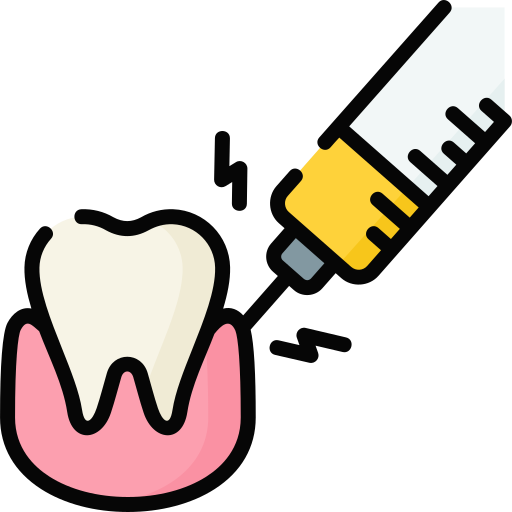
Endodontics

Diagnostic & Preventive Services

Periodontics

Cosmetic Dentistry
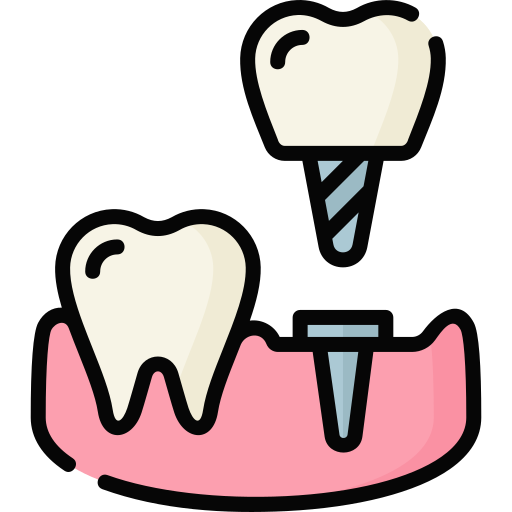
Implant Dentistry

Emergency Dentistry

Orthodontics
Restorative Dentistry
No Need to Hide Your Smile
Restorative dentistry refers to any dental procedure that repairs or replaces a tooth. This can include procedures such as fillings, crowns, bridges and even removable dentures. Our goal at Right Family Dental is to restore the function and integrity of the tooth structure, function and health, while maintaining a natural appearance.
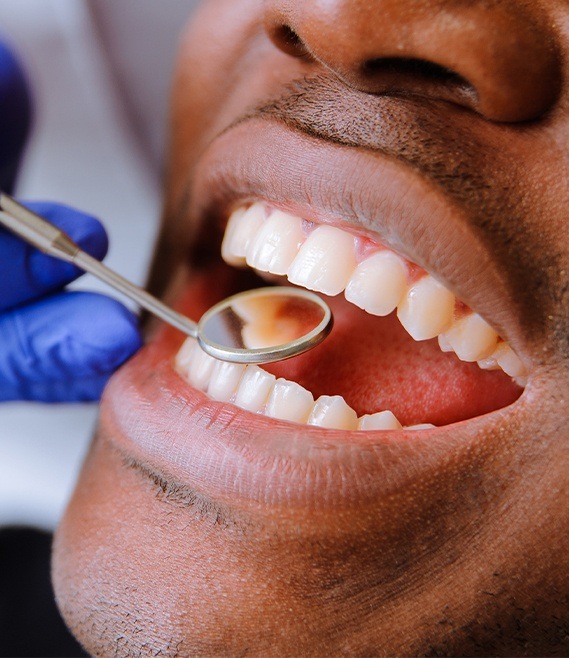
Procedures used to restore teeth
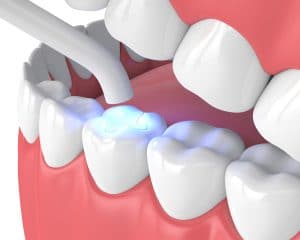
Dental Filling
Dental Filling At Right Family Dental, we use composite fillings as a treatment method for tooth decay. Our team has the necessary experience with placing these tooth-colored fillings and can work to ensure that the patient is comfortable throughout the procedure. This is one of our most frequently used procedures, since a filling is typically placed after removing tooth decay (common cavities). Composite fillings match the shade of your natural teeth while providing the necessary level of protection. While many refer to a composite resin as a "white" filling, the actual shade may be more of a crème, if that is what is necessary to blend in. Composite resin fillings function in the same way amalgam ones do, so they are still effective for restoring teeth that have suffered from decay or fracture. How does the treatment Work? Before a filling is performed, the dentist numbs the gums around the affected tooth using an injection of local anesthetic. Once the area is numbed, the affected tooth is inspected. Filling is determined based on the amount of tooth decay or damage. If tooth decay is present, the affected areas of the teeth are removed and the tooth is cleaned, washed and dried. Filling material is then inserted where the affected area was and the original shape of the tooth is restored. A patient is then asked to bite hard to see if the filling feels comfortable.
See more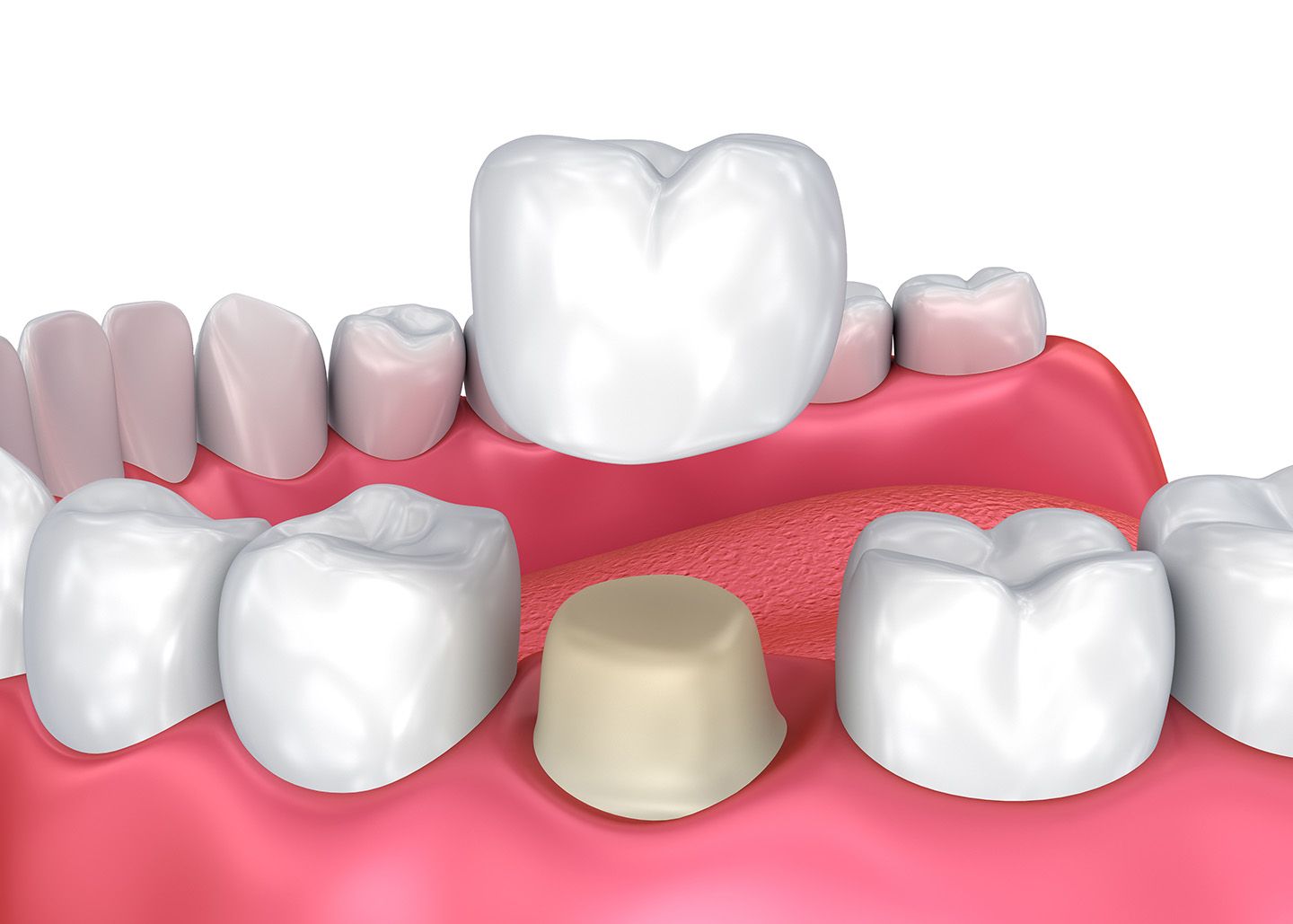
Crowns
Dental crowns have a variety of dental applications including strengthening and improving tooth shape, size or color, supporting broken or weak teeth or those with large fillings. They offer the patient a properly contoured surface for stained, misshapen, or otherwise abnormal teeth. How does the treatment work? When placing a dental crown around a tooth, we start by preparing the tooth. We will need to remove a portion of the enamel so that there is room for the new crown to surround the tooth without pushing other teeth out of place. Once complete, we will clean the tooth and secure a temporary crown to it using removable glue. Patients typically wear a temporary crown for around a week while waiting for a permanent one to be created in the lab. During this time, it is important to be careful with what you eat and how you brush your teeth since the temporary is designed to come off. When the dental restoratives are complete, patients return to our dental office, so that we can remove the temporaries and bond the permanent ones to the tooth. For a dental crown, we will secure the cap around the tooth and complete it through dental bonding. With a bridge, a crown is placed on the two teeth that are surrounding the missing one. On top of the crown is a piece that looks like natural gums that will hold the new tooth in place. These two crowns serve as anchors for this synthetic "bridge" and make a new tooth as durable as it can be. Patients depend on this procedure as a way to replace missing teeth in a way that looks natural and restores the functionality of the missing tooth.
See more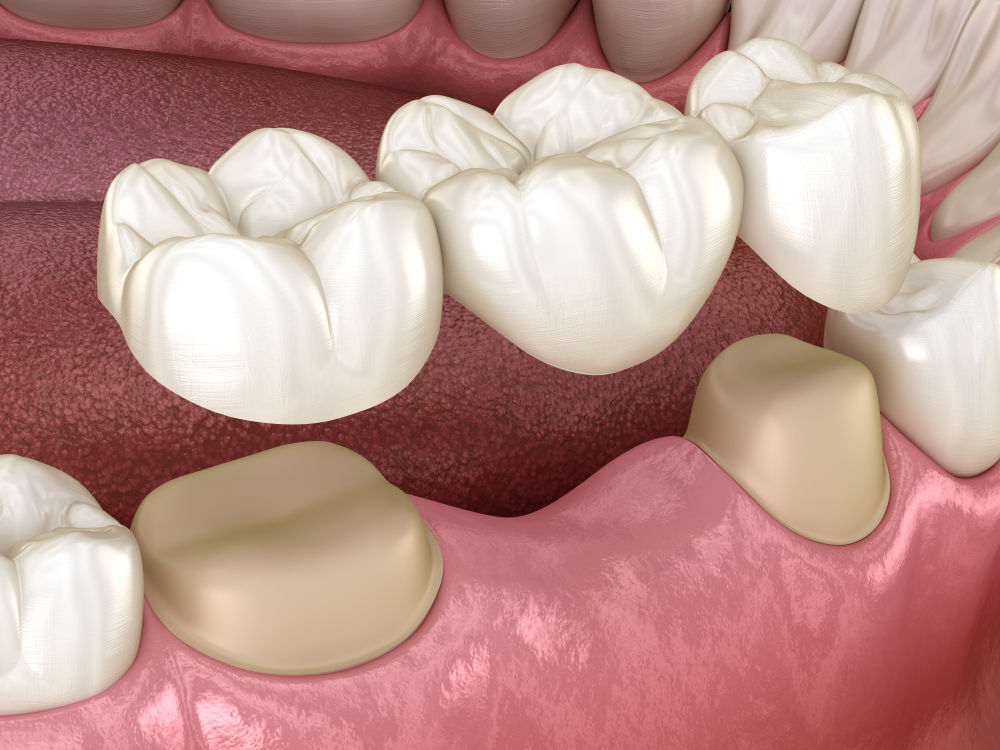
Fixed Bridges
Dental bridges can provide a natural-looking tooth replacement process that can help reduce stress on the jaw, fill in spaced caused by missing teeth, and help maintain facial structure characteristics. Fixed bridges are permanently cemented to the existing teeth. At Right Family Dental, we provide our patients with dental bridges if they want to replace a tooth without wearing dentures or undergoing surgery. The new tooth is held in place by two crowns. It looks natural and consists of a ceramic or porcelain material to match the surrounding teeth.
See more
Removable Partial/Full Dentures
Partial Dentures If only a few of your teeth are missing, partial dentures are a good solution for replacing them. Unlike a full set of dentures, these are held in place by a plastic base that is the same color as your gums. A metal framework is typically created in order to secure the base and prevent it from falling out. As long as you have natural teeth in place, you cannot wear a full set, so a partial set of dentures is necessary. At Right Family Dental we offer our patients options to choose from the type of removable dentures. Many people ask about Metal Dentures (Cast Partial) vs Plastic Dentures (Flexible Thermoplastic Partials), so we thought we would write an article to explain the main differences. A cast metal partial denture involves a metal framework that attaches by way of clasps connected to crowns or natural teeth. The metal frame is obviously not visible (the gum-colored acrylic plastic covers it), but when you smile, the clasps may be visible. Flexible Partial Dentures aren’t exactly new, but their acceptance has been increasing recently because they are very comfortable. Unlike rigid dentures, flexible dentures are very gentle on your gums. Flexible dentures are also less likely to be dislodged by chewing. That’s because they can’t get levered out of place. When one side of the denture experiences more force than the other, the dentures just flex in the middle. This can also make flexible dentures less likely to get broken. Flexible dentures provide a solution for patients who can’t or don’t want to use regular dentures. The most obvious advantage is that they aren’t brittle, so they’re less likely to shatter if they’re dropped. Comfort is a major benefit, and patients often find chewing easier than when wearing regular dentures. Some patients are allergic to acrylic resin, nickel or other materials in traditional dentures, and some have difficulty opening their mouths wide. For these patients, the flexible variety may be the only type they can wear. Dentists may also recommend them to patients who have had missing teeth for a long time. Complete Denture When all of your teeth are missing, complete dentures can replace them. This is the type of dentures that you typically see in cartoons and movies. Technology has improved in recent years, making them more comfortable and natural looking than ever. We can determine if this is the best way to replace your teeth or if an alternative solution will help you to achieve your goals. If you proceed with getting a complete set of dentures, your gums will be healed and ready in eight to 12 weeks after your teeth have been removed. Following teeth removal, the bones and gums will start to shrink. By waiting for up to 12 weeks, you can be sure that your set of complete dentures will fit securely. Many patients throughout New York prefer not to wait and get immediate dentures. This solution does not require a waiting period, but there will be adjustments later on after the gums and bone have settled into their permanent size.
See moreAchieve all of your oral health and smile goals today
Visit us:
Contact us: